Frederick Douglass: Belfast statue of black anti-slavery activist unveiled
- Published
Statue of American activist Frederick Douglass unveiled
A life-size bronze statue of the black American anti-slavery activist Frederick Douglass has been unveiled in Belfast city centre.
Mr Douglass, a former slave, was a leading member of the abolitionist movement to outlaw slavery in the US.
He visited Belfast a number of times in the 1840s at the invitation of the Belfast Anti Slavery Society.
The lord mayor of Belfast described the unveiling of the statue as a "positive news story for the city".
"His writings and his values are just as relevant today as they were in the 19th century when he was touring Ireland," Ryan Murphy said.
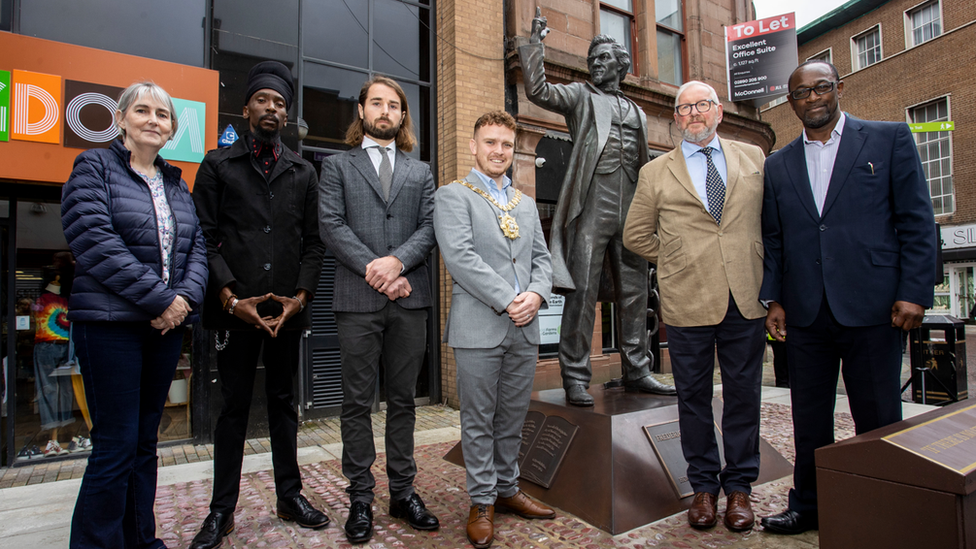
Anna Slevin from the Department for Communities, Takuri Makoni of the African and Caribbean Support Organisation NI (ACSONI), sculptor Hector Guest, Belfast Lord Mayor Ryan Murphy, sculptor Alan Beattie Herriot and the Reverend Dr Livingstone Thompson of ACSONI at the unveiling
Speaking on to the BBC's Good Morning Ulster programme, the lord mayor said: "His story is fairly remarkable and the fact that we have a linkage to him, I think it's worth telling that in the city of Belfast."
Mr Murphy added that the statue would help Belfast "welcome more visitors into the city".
The city has become the first in Europe to honour Mr Douglass with a statue.
It is located at Rosemary Street, close to where he addressed crowds in 1845.
Escape from slavery
Mr Douglass was as born into slavery in Maryland in 1818. He escaped enslavement and became one of that century's most prominent abolitionists.
He had a talent for public speaking and travelled widely, telling people about life as a slave.
He recounted his life story in his 1845 memoir Narrative of the Life of Frederick Douglass, an American Slave.
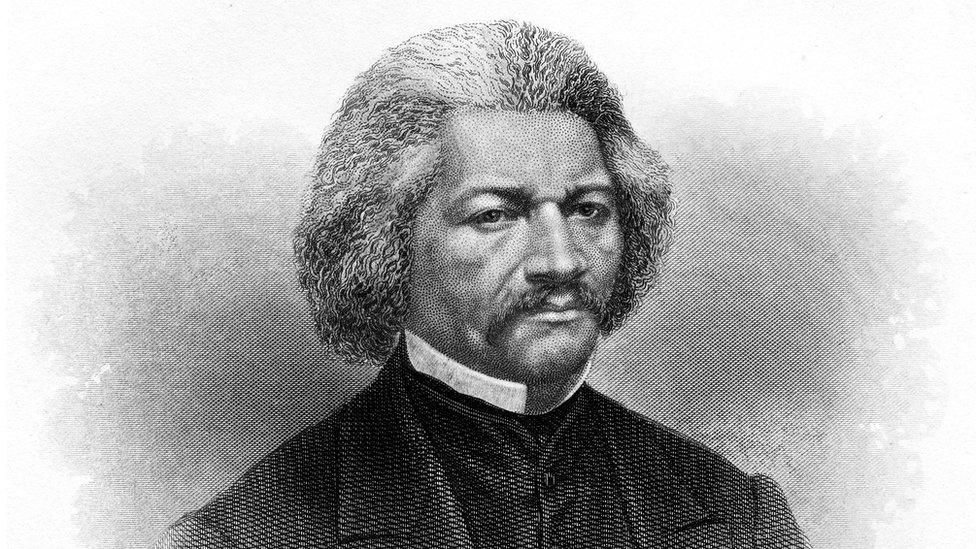
Frederick Douglass was as born into slavery in Maryland in 1818
At Monday's unveiling in Belfast, historian Prof Christine Kinealy described how Mr Douglass came to Ireland to escape recapture and return to enslavement in the United States.
She said that he came to love the country and the city of Belfast, quoting from one of his speeches: "Whenever else I feel myself to be stranger I will remember I have a home in Belfast."
Alan Beattie Herriot, one of the sculptors behind the project, also spoke at the unveiling.
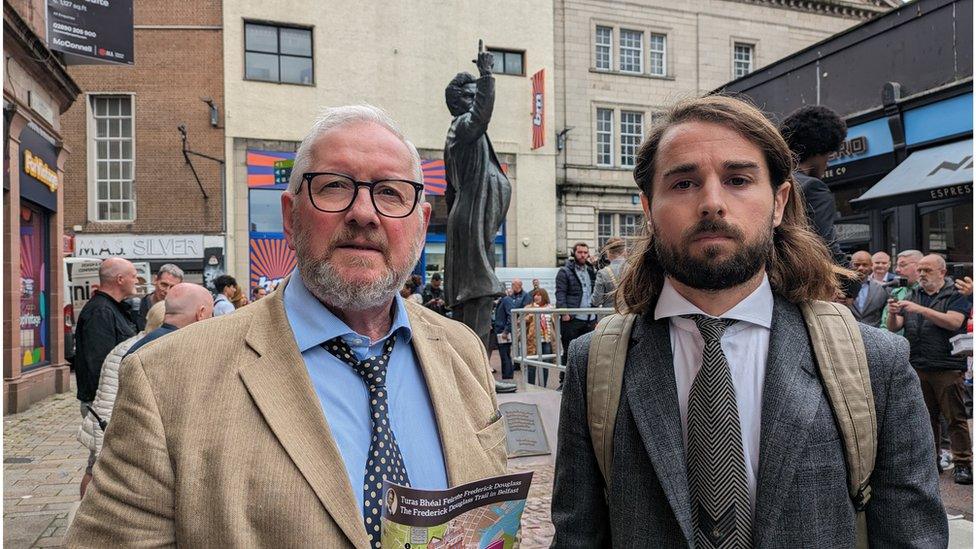
Sculptors Alan Beattie Herriot and Hector Guest
"The memorial is dedicated to a very special individual who triumphed against his own personal situation and went on to champion the rights of others," he said.
Mr Beattie Herriot also thanked his partner on the project, Hector Guest, describing him as a "particularly talented sculptor".
Also attending the unveiling were several students taking part in the Frederick Douglass Global Fellowship.
Among them was Florence Onyiuke, a student of University of Pennsylvania, who described Mr Douglass's as a "story of hope".
"This idea that you can take whatever circumstance that you are born into and make it better, not only for yourself but for the next person after you," she said.

Florence Onyiuke (left) with classmate from Frederick Douglass Global Fellowship Samuel Li
'An anti-slavery city'
Historian and tour guide Tom Thorpe said the statue was appropriate, describing Belfast as an "anti-slavery city".
He said that while "many people in Belfast did own slaves", an attempt to set up a slave ship company in the city in 1786 failed due to opposition in the city.
"Slavery never established itself here in the way that it did in Liverpool, London, and Bristol," Dr Thorpe added.
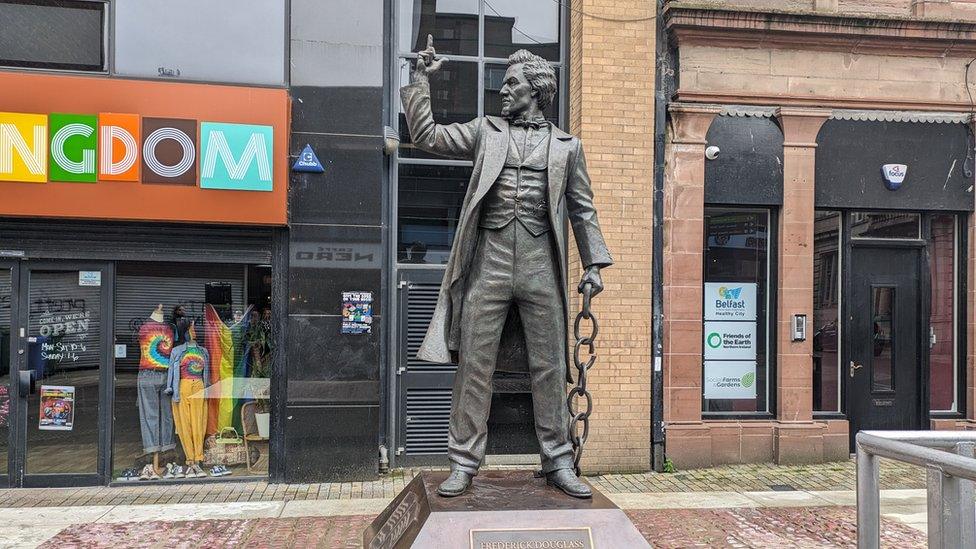
Dr Thorpe said the statue of Mr Douglass "takes us into a history which united us rather than divides us".
"The anti-slavery cause was followed by people from across the political divide, unionists and nationalists, but also from the Catholic and Presbyterian communities," he said.
Related topics
- Published3 November 2020
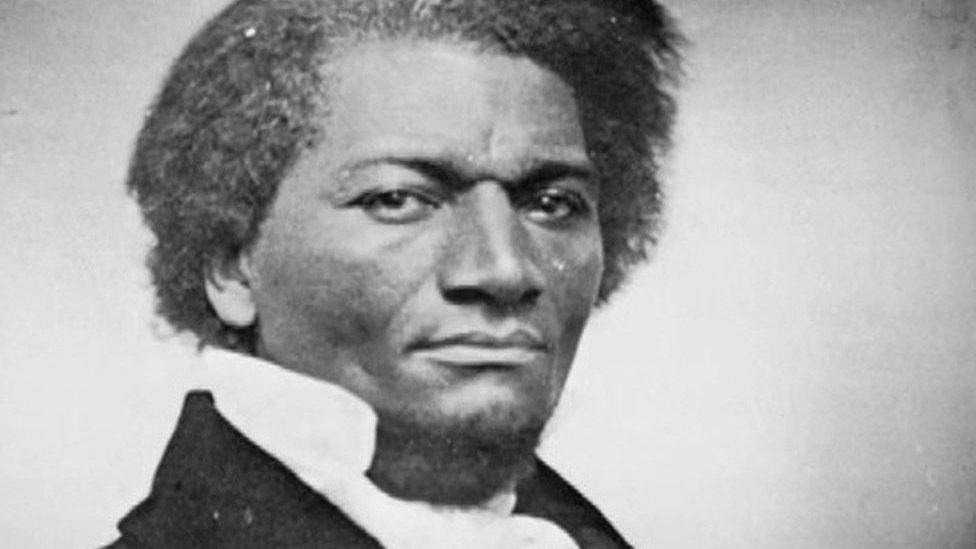
- Published27 May 2018
